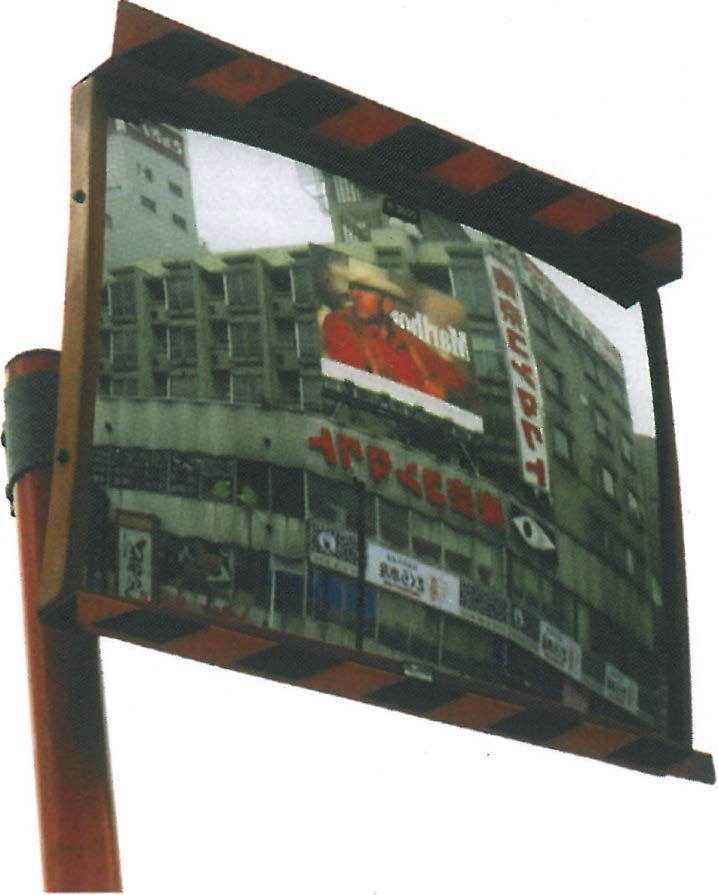
Interesting convergences of approach characterise the recent works featured in Flux: uncertain states: new art from Western Australia. Deftly curated by John Barrett-Lennard as exploring 'somewhere fractured and hard to resolve & edges, places that won't come into focus', Flux demonstrates artists at play with their positioning in the world, producing a reflexive and open-ended series of works whose thoughtful approach combines strong elements of humour and insight. This refreshing sample of contemporary practice in WA maps relations between art, artists and the shifting parameters of social context.
Key elements binding these works are a whimsical humour and a paradoxical streak of logic that refuses to resolve into articles of common sense. This emerges from recurring motifs of the pursuit of the perverse: following a curve of strategy to the nth degree. With White Bun and Pink Bun, Rodney Glick and Lynnette Voevodin offer a droll play on materiality with a massive hunk of polyurethane foam hewn with chipped away, swirling movement, which counteracts the stasis of the dense and glistening bulk. This reconstituted, scraped-back-together fluidity of texture also conjures the geological aridity of dunes or moons. Above this grins Glick's large vinyl image of a redolent, slightly pixellated and juicy Pig in a pond, with the caption AMBITIOUS? WHO, ME?
Two intriguing split screen videos complement these playful works, including a reverse cycle Duchampian motif of nude-bouncing-on-the-mini-trampoline (to the relentless soundtrack creak of springs...).
The most striking of Matt Hunt's installations is an array of staghorn ferns on a section of wall; a sea of trophies presiding over bowling balls and lawn bowls scattered amongst two monitors on a series of long tables that are separated to create channels. A vaguely comic paranoia emerges from this subtle network of blundering inertia amidst displaced references to animals and nature, and short contrasting video loops feature both an amusingly demented repetition shot from the film Predator (in which a commando strafes the preternaturally shifting jungle with a steady rain of flaming ammo), while the other shows a greyed ripple surface of interference patterns in water.
Stuart Ringholt's works include All The Things I Own, 2002 (2003), a catalogue in two simply bound yellow books with a numbered inventory of the artist's ordinary existence. Documented of short performances, such as the hilariously literal on Tuesday he wore a booger in his beard, (at the Armadale Centrelink office) and the delightful image in Sunday, 2002 of a hairy pair of disembodied legs waving in the air in a children's playground, suggesting a headfirst kamikaze swing-set high dive.
Consuelo Cavaniglia's Constructions presents permutations of domestic surfaces and the assembling of 'rooms': a series of small scale models featuring wallpapered panels with L-props behind are grafted and grouped on the gallery wall, viewed from bird's-eye perspective. This interesting spatial logic is echoed with larger scale panels and props arranged in the gallery, creating clusters of attempted dwellings through these curious veneered enclosures.
Meanwhile Annabel Dixon's preoccupation with taxonomy explores the grey area between random arrangements and various levels of categorisation, from the formal language of encyclopaedic indexes to the personalised struggle creating a coherent personal system from the familiar dilemma of 'stuff in boxes' in Moments of Indecision. These frustrations are mapped amusingly through found material such as discarded book titles (Perfect Everything, Cataloguing Rules, Success and Failure at University, A Kind of Anger, The Valley of Decision, Magnificent Obsession...) and yellow post-it notes ('work I should have used before I learned too much...').
Kate McMillan's Tidelands offers a meditation on internationalisms and porous borders, as a series of images of carbon-copy Embassy buildings in East Germany are juxtaposed with and intersected by curio-shelves of exotic tropical shells. As we scrutinise the buildings for their obscure common logic, the overlapping elements of the work thread these islands of belonging into a complex net of displaced wanderings. Erin Coates presents us with two surveillance based works as well as Ragnarok I & II: compellingly large lightbox photo-images featuring a portentious mass of clouds and light-burst atop two transmission towers, whose strutted grids give totemic majesty to this suggested bridge into mythic Asgard-ian otherworld fictions.
Overall, Flux is a simultaneously elusive and yet engaging series of works, which solicit the viewer into a relaxed assimilative mode in which the curious logic and strategy at work encourage contemplation. For those who appreciate these sometimes tricky qualities in their art engagements, it's a playful and enjoyable viewer experience.












